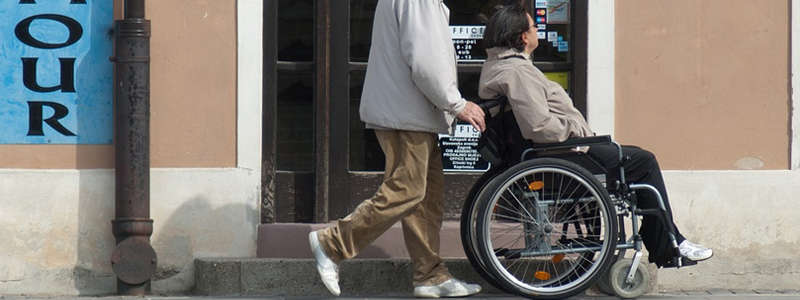
Aim for accessibility
In Ireland, the Disability Act 2005 is the legislation designed to help anyone with a disability get the same access as everyone else. It places an obligation on all public service providers to ensure that anyone with a disability can access their facilities, services or public information. Additionally, the Equal Status Acts 200 & 2004 look to ensure these same rights in the case of other goods and services, while the Employment Equality Act aims to enforce them in the workplace.
Despite increased awareness and even legislation driving improvements for accessibility in Ireland, service providers are still failing to provide the level of accessibility that many need. From education to transport, people with disabilities all over the world continue to struggle with even mundane day to day tasks.
Why accessibility is so important
Whether it’s navigating tricky road works and kerbs or going out for an evening meal at a restaurant, everyday activities can quickly become challenging obstacles for wheelchair users and other disabilities. Sometimes there are temporary solutions to these problems, such as being helped up a step by a group of people, but often it can simply mean not being able to access the product or service.
Adjusting a facility or service to account for potential difficulties that those with disabilities may face ensures that everyone with a disability has the same access as everyone else. It’s good for the service providers too, as it opens up their products or services to even more people. By speaking up about these problems, it raises awareness and drives changes to benefit others in the future. Public service providers such as transport operators and bankers are required to make these adjustments by law, but all goods and service providers can benefit from being more accessible.
What you can do to be more accessible
The legislation isn’t there to make life difficult. The National Disability Authority (NDA) outlines some simple steps that service providers can take to be more accessible. While they are requirements for public bodies, anyone can benefit from adopting these best practices. If you’re looking to be more accessible, here’s just a few of the things you can do to get started.
Assess your current accessibility
Put yourself in the shoes of someone with a disability, or ask someone you know with a disability to help. Walk around the area and look out for places that could cause an obstruction to someone in a wheelchair or with limited mobility. This includes any types of steps or other obstruction on the floor, such as cables or protruding thresholds.
Look at what can be achieved
Start thinking about practical measures that can be taken to adjust any problems. Often there is a simple and affordable way to make areas more accessible. This includes temporary wheelchair ramps which are usually a convenient solution to many accessibility problems including steps. Often lightweight and affordable, temporary ramps can be set up quickly while being compact enough for easy storage. This means you can provide safe access to wheelchair users and anyone with limited mobility, while also causing minimal disruption to your usual accessibility. You can also find smaller and often cheaper threshold ramps if the step is small.
It’s more than mobility
Remember that accessibility is more than just getting around. Where it is practical and appropriate, you can also provide assistance to anyone with a disability. You will need to consider what type of assistance might be needed and whether it’s achievable for you to provide the necessary services. This can be anything from just additional guidance for anyone that may struggle to use your products or services, to more specialised services such as sign language interpretation.
Get a helping hand
Finally, seek assistance if necessary. Organisations like the NDA are always happy to give advice, and there is plenty of information online to help you understand what measures should typically be implemented to aid accessibility.
Simple accessibility solutions
Ramps are often a simple solution to most wheelchair and limited mobility problems. From temporary to permanent ramps, there is a wide variety to meet the complexities and budget of any accessibility requirement. While they are usually easy to set up and use, we are always on hand to help with any wheelchair ramp accessibility questions to help you get the perfect solution for the right price. You can also take a look at our comprehensive wheelchair ramp guide with all the information you need to find the right length and safest gradient.



